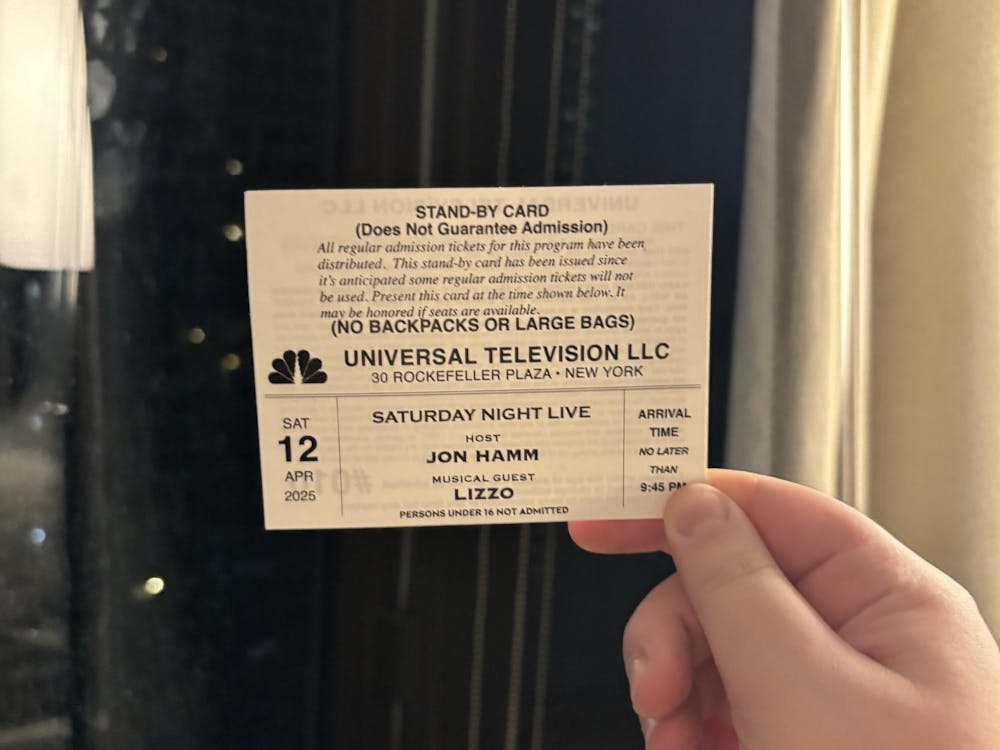This is the continuing story about how vinyl shaped my love for music. You can read the last part of this blog here.
High school was speeding past, and I officially had my own record player. So what if its built-in stereo had mediocre quality, or that its needle was probably damaging my vinyl? It was my prized possession. If my house had burned down and I could only save an armful of items, I would've wrapped my scrawny teenage arms around it and hauled it clear of danger.
With the record player came a small but respectable collection of classic rock LPs. The more I played them, the more I felt the desire to expand it. After all, the records were technically mine, but they weren't mine. It needed to be personalized, and it needed to be done for cheap. My small hometown didn't have anything resembling a music store, and shiny new records in the nearest mall's FYE wouldn't cut it. Thus began my search for a vinyl shop.
Little did I know, Columbus -- an hour away from my mom's house and 20 minutes from my dad's -- is the home to no less than five excellent record stores. I would frequent them all in due time. But first, I chose a place 25 minutes from my mom's house.
The store was called Pulp Reality. Whatever I expected a record store to be, it wasn't that.
Opening the store's broken front door unleashes an odor of old paper and the lingering scent of cigarettes that hangs on smokers. White papers taped to the walls display prices in caps lock standard font. On one side are tables stacked with rows upon rows of slightly organized movies, and everywhere else are the records, organized just as loosely.
As I learned after visiting the place dozens of times, Pulp Reality focuses on classic rock. Bins with individually priced LPs feature a who's-who of the hard rock of decades past.
Here lies the true beauty of Pulp Reality: any record without a price tag is $2.The unpriced vinyl is arranged around the room with wild abandon, lined up in neat rows or crammed into milk crates or piled two feet high. Most of these records are barely even worth the $2. But sometimes, true gems outside of the rock genre can be found dirt-cheap. I've taken home Miles Davis' "Bitches Brew," Stevie Wonder's "Talking Book," and much more for just a few dollars.
But there's only one cheap buy that I consider a true gem, for which I will always be thankful to Pulp Reality: David Bowie's "The Rise and Fall of Ziggy Stardust and the Spiders from Mars."
The 1972 album hailed as one of the finest musical achievements ever.
For $2.
When I bought it, I had no clue what it was. I wasn't a stranger to Bowie, but "Ziggy Stardust" is relatively devoid of his most iconic singles. What did draw my attention was the front cover. It depicts Bowie's persona of Ziggy, a Technicolored man standing under a building sign that reads "K. West."
Enjoy what you're reading?
Signup for our newsletter
What did my high-school mind think? "Hey! K. West! Like Kanye West! That's funny!"
Some quick research introduced me to one of music's most intriguing conspiracies: the album's opener, "Five Years," prophesied that the world would end in that titular period unless a "Starman" arrived to save humanity. "Ziggy Stardust" was released on June 6, 1972; Kanye West was born five years and two days later on June 8, 1977.
This ludicrous connection had me hooked. I coughed up my cash and walked out knowing almost nothing about the music itself.
At home, I examined the record further. The packaging's spine hung in tatters and the lyric-lined record sleeve had yellowed with age. On the back cover, at the bottom of the text detailing song titles and musicians, was a simple statement: "TO BE PLAYED AT MAXIMUM VOLUME." Feeling whimsical, I obliged, turning the knob of my meager Crosley speakers all the way up and putting the needle on the wax of "Five Years."
Here's what I experienced.
From nothing, a soft drum beat rises. Warm crackles and soft pops that can only come from a record pepper the empty space behind the percussion. Then a massive piano chord, and the strange, playful voice that defined Bowie's early-1970s discography.
The lyrics weave an absurdist tale of the apocalypse. Bowie sounds mournful and panicked. The world ending strikes him with confusion. As the song progresses, strings build behind the piano. At maximum volume, its magnificence fills the room. It's all pomp and bombast, Bowie yelping "My brain hurts a lot!" with the orchestration swelling with stunning beauty.
By the time the strings launched me to space and the soft drums came back to close the song, I knew this was a special record. I devoured the remaining tracks in all their glory, from the psychedelic trip to the cosmos in "Moonage Daydream" to the impassioned closer "Rock 'n' Roll Suicide." Bowie's brilliance as a songwriter, glam-rock showman and otherworldly persona rang in my ears long after I turned the volume down.
I've never seen another used copy of "Ziggy Stardust." His records soared in popularity after his unfortunate passing. The fact that I got this record for $2 -- and that I only bought it because of a conspiracy involving Kanye West as a space-born savior -- dumbfounds me to this day.
This is a story of pure discovery which can only exist in a physical medium. I've found countless artists, albums and songs through Spotify and YouTube. But there's a certain intimacy to holding an unknown artifact in your hands, paying money for it and putting the record needle down for the first time. My cheap, beaten-down copy of "Ziggy Stardust" will forever bring back memories of blasting my ear drums with what would become some of my favorite music ever.
keelinst@miamioh.edu




